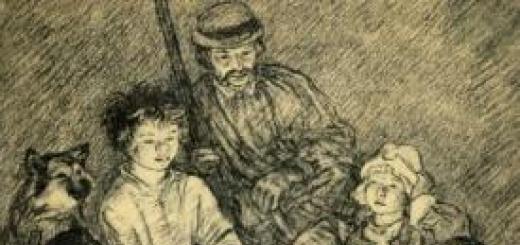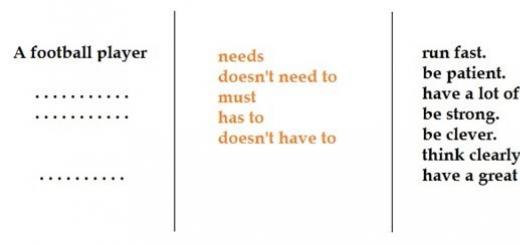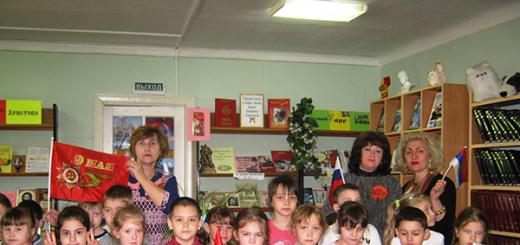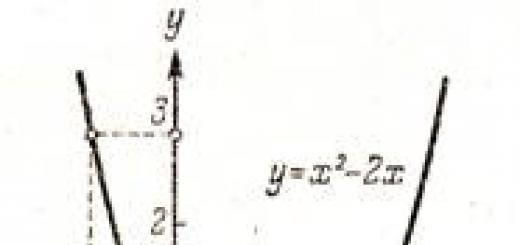There is no science absolutely isolated from other knowledge. They are all closely intertwined with each other. And the task of any teacher or lecturer is to maximize these interdisciplinary relationships. In this article we will consider in detail the connections of geography with other sciences.
Interscientific connections - what is it?
Interscientific (or interdisciplinary) connections are the relationships between individual disciplines. During educational process they must be established by the teacher (teacher) and the student. Identification of such connections ensures a deeper assimilation of knowledge and contributes to its more effective application in practice. Therefore, the teacher needs to focus special attention on this problem when studying any science.
Identification of interdisciplinary connections is an important factor in building a meaningful and high-quality education system. After all, their awareness by the student allows him to more deeply understand the object and tasks of a particular science.
Sciences that study nature
The system of sciences that study nature includes physics, biology, astronomy, ecology, geography and chemistry. They are also called natural scientific disciplines. Perhaps the main place among them belongs to physics (after all, even the term itself is translated as “nature”).
The relationship between geography and other sciences that study nature is obvious, because they all have a common object of study. But why then do different disciplines study it?
The thing is that knowledge about nature is very multifaceted, it includes many different sides and aspects. And science alone is simply unable to comprehend and describe it. That is why several disciplines have historically been formed that study various processes, objects and phenomena occurring in the world around us.
Geography and other sciences
It is interesting that until the 17th century, Earth science was unified and holistic. But over time, as new knowledge accumulated, the object of its study became more and more complex and differentiated. Soon biology, and then geology, split off from geography. Later, several more geosciences became independent. At this time, based on the study of various components of the geographical shell, connections between geography and other sciences are formed and strengthened.
Today, the structure of geographical science includes at least fifty different disciplines. Each of them differs in its research methods. In general, geography is divided into two large sections:
- Physical geography.
- Socio-economic geography.
The first studies natural processes and objects, the second studies phenomena that occur in society and the economy. Often, the connection between two narrow disciplines from different sections of the doctrine may not be traced at all.
On the other hand, the connections between geography and other sciences are very close. So, the closest and “native” to her are:
- physics;
- biology;
- ecology;
- mathematics (in particular geometry);
- story;
- economy;
- chemistry;
- cartography;
- medicine;
- sociology;
- demography and others.
Moreover, at the intersection of geography and other sciences, completely new disciplines can often be formed. This is how, for example, geophysics, geochemistry or medical geography arose.
Physics and geography: connections between sciences
Physics is, in essence, pure. This term is found in the works of the ancient Greek thinker Aristotle, who lived in the IV-III centuries. BC. That is why the connection between geography and physics is very close.

Essence atmospheric pressure, the origin of wind or the peculiarities of the formation of glacial landforms - it is very difficult to cover all these topics without resorting to the knowledge gained in physics lessons. Some schools even practice classes in which physics and geography are organically intertwined.
The connection between these two sciences within school education Helps students gain deeper knowledge educational material and refine your knowledge. In addition, it can become a tool for schoolchildren in “related” science. For example, a student who was previously not very good with physics may suddenly fall in love with it in one of his geography lessons. This is another important aspect and benefit of interdisciplinary connections.
Biology and Geography
The connection between geography and biology is perhaps most obvious. Both sciences study nature. But biology focuses its attention on living organisms (plants, animals, fungi and microorganisms), and geography - on its abiotic components (rocks, rivers, lakes, climate, etc.). But since the connection between living and nonliving components in nature is very close, this means that the data of science are a priori connected.

At the intersection of biology and geography, a completely new discipline was formed - biogeography. The main object of its study is biogeocenoses, in which biotic and abiotic components interact. natural environment.
These two sciences are also united by the question. In search of the correct answer to it, geographers and biologists are consolidating all their efforts.
Ecology and geography
These two sciences are so closely interconnected that sometimes the subject of their research is even identified. Any solution environmental problem it is simply impossible without referring to aspects of geographical science.
The connection between ecology and physical geography is especially strong. It resulted in the formation of a completely new science- geoecology. This term was first introduced by Karl Troll in the 1930s. This is a complex applied discipline that studies the structure, properties and processes that take place in the human environment, as well as other living organisms.
One of the key tasks of geoecology is the search and development of methods rational environmental management, as well as assessment of prospects sustainable development specific regions or territories.
Chemistry and Geography
Another discipline from the natural sciences class that has fairly close connections with geography is chemistry. In particular, it interacts with soil geography and soil science.

Based on these connections, new scientific fields have emerged and are developing. These are, first of all, geochemistry, hydrochemistry, atmospheric chemistry and landscape geochemistry. Studying some topics in geography is simply impossible without appropriate knowledge of chemistry. First of all we're talking about about the following questions:
- spreading chemical elements in the earth's crust;
- chemical structure of the soil;
- soil acidity;
- chemical composition of waters;
- salinity of ocean water;
- aerosols in the atmosphere and their origin;
- migration of substances in the lithosphere and hydrosphere.
Assimilation of this material students will take place more effectively in integrated lessons, based in laboratories or chemistry classrooms.
Mathematics and Geography
The relationship between mathematics and geography can be called very close. Thus, it is impossible to teach a person to use a geographic map or area plan without basic mathematical knowledge and skills.

The connection between mathematics and geography is manifested in the existence of so-called geographical problems. These are the tasks:
- to determine distances on the map;
- to determine the scale;
- to calculate the height of a mountain from temperature or pressure gradients;
- for calculations on demographic indicators etc.
In addition, geography very often uses mathematical methods in its research: statistical, correlation, modeling (including computer) and others. If we talk about economic geography, then mathematics can be safely called its “stepsister”.
Cartography and geography
The connection between these two scientific disciplines no one should have the slightest doubt. After all, a map is the language of geography. Without cartography, this science is simply unthinkable.
There is even a special research method - cartographic. It consists of obtaining the information a scientist needs from various maps. Thus, geographic map from an ordinary product of geography turns into a source of important information. This research method is used in many studies: biology, history, economics, demography, and so on.
History and geography
"History is geography in time, and geography is history in space." This unusually precise thought was expressed by Jean-Jacques Reclus.

History is exclusively concerned with social geography (social and economic). Thus, when studying the population and economy of a particular country, one cannot ignore its history. Thus, a young geographer should a priori general outline understand historical processes that took place in a certain area.
IN Lately ideas are emerging among scientists about the complete integration of these two disciplines. And in some universities, related specialties in “History and Geography” have long been created.
Economics and Geography
Geography and economics are also very close. In fact, the result of the interaction between these two sciences was the emergence of an entirely new discipline called economic geography.
If for economic theory the key question is “what to produce and for whom,” then economic geography is primarily interested in something else: how and where are certain goods produced? This science also tries to find out why the production of a particular product is established in this (specific) point of the country or region.

Economic geography originated in the middle of the 18th century. Her father can be considered the greatest scientist M.V. Lomonosov, who introduced this term into use in 1751. At first, economic geography was purely descriptive. Then the problems of distribution of production forces and urbanization entered her sphere of interests.
Today, economic geography includes several branch disciplines. This:
- geography of industry;
- Agriculture;
- transport;
- infrastructure;
- tourism;
- geography of the service sector.
Finally...
All sciences are related to each other to a greater or lesser extent. The connections between geography and other sciences are also quite close. Especially when it comes to disciplines such as chemistry, biology, economics or ecology.
One of the tasks modern teacher- identify and show the student interdisciplinary connections in specific examples. This is an extremely important condition for building a quality education system. After all, the effectiveness of its application to solve practical problems directly depends on the complexity of knowledge.
Initially, like any scientific discipline, at the initial stage of its development, geography was merged with other branches of social life (syncretism) - with philosophy, with mythology, etc. Gradually, its separation occurs as scientific knowledge. However, in the early stages of its development, Geography was closely connected with other scientific knowledge: travelers described new lands from the point of view of nature, agriculture, ethnography, etc. Those. geography developed together with biology, zoology, ethnography, etc., and scientists of that time were “encyclopedist scientists.” Transitional disciplines emerged such as geobotany, biogeography, historical geography, etc. Thus, the processes of differentiation of science (the opposite of integration processes at present) have developed.
Nowadays, due to the progressive complication of the system of scientific knowledge, geography in general, and each geographical discipline in particular, interact with a huge amount various sciences.
All views of geographers have always been influenced by the methodological settings of other sciences. In general, three sources of the strongest impacts can be identified:
1. Natural sciences, where physics has come first in terms of developing the most compelling paradigm scientific explanation(most high level theorization of knowledge).
2. Sociology and related sciences.
3. History – which had a significant impact on the thinking of geographers (introduction, along with spatial thinking, of temporal or historical thinking).
The nature of the Earth is organized at least on three levels simultaneously: complex, component and elementary.
The last one is level material bodies and processes are also studied by other natural sciences. The geographer studies a certain component as if on its own, in connection with other components of the geographical envelope, while others natural Sciences study their patterns of functioning and development. However, later there was a need to have information about the nature and pace of processes, to establish the relationship between them and the factors that influence them. There was a change from the descriptive nature of geography to the essential one, in which there was a need for in-depth knowledge specifically about processes (example: not just describe the leveling surface as a result of abrasion, but know the nature and pace of development of coastal destruction processes).
Geography enriches the social sciences with new materials and ideas. The study of specific manifestations of interactions between society and nature, both on a regional and global scale, has general methodological significance, although geographers will belong here the main role in the study. The geomethod is considered by the philosopher B.M. Kedrov as the methodological role of geography.
The peculiarity of the interaction of geography with other sciences was as follows. Almost until the middle of the 20th century, there was a close connection between geography and history. This connection was reflected at many levels of teaching geographical disciplines. Recently, the connections between geography and environmental knowledge have grown significantly, and attention is increasingly focused on the interaction of society with the environment.
Recently, there has also been an active mathematization of geographical disciplines. Important incentives here are the development of space geosciences and the need for geographic monitoring environment, the development of international statistical systems and the relevance of integrating demographic, socio-economic and political information. The need to build complex mathematical and cartographic models of the development of industrial complexes and socio-economic territorial complexes also requires the use of mathematical tools.
There is a close connection between geography and computer science - the development of GIS is why shining example. It was at the intersection of ethical sciences that the possibility arose of automating cartography, processing space information, creating geoportals and spatially distributed geographic data banks.
The most important result of informatization of geographical knowledge is the gradual consolidation, and in the future, integration of geographical disciplines based on the information paradigm. Modern research must certainly be carried out on a general scientific basis, which is directly related to computer science, and through it to mathematics, cybernetics, systematic approach and synergy.
The creation of data banks and GIS is of basic importance for such integration of geographical knowledge. It is precisely the generality of the construction of the latter for any theory that can become new general program for all geographical disciplines.
At the same time, computer science in some cases forces us to seriously adjust the very methodological principles of geographical knowledge. Geographical problems of classification, taxonomy, and zoning, when solved on an information basis, require rethinking and further improvement of the methodological and theoretical scope of geography.
New approaches closely related to the theory of informatization, system analysis and synergetics have led to an awareness of interrelated geographical processes: spatial organization, spatial management and self-government or self-organization of systems. These processes can be found in any geographical process - population migration, land use, location of industries, etc.
It must be emphasized that geography is a science with high ideological potential and is closely connected with the entire cultural system. Geography largely shapes public consciousness(geographical picture of the world).
Despite the fact that the era of the great geographical discoveries left far behind long journeys Sailing and mountain climbing have become sports, and the science of geography is still actively developing. However, today its development is closely connected with other sciences, such as geophysics, computer science, astronomy and political science.
The connection of modern geography with other sciences
In the 21st century, geography is losing its conceptual unity, giving way to new and increasingly diverse areas that focus on great attention interaction between man and environment, regionalism and working with large data sets.
Thus, we can safely talk about the obvious connection between geography and sociology, computer science, cultural studies and political science. The process of increasing differentiation is natural and is observed throughout the formation and development of Earth science. However modern trend includes not only the differentiation of geography, but also its integration with other sciences.
Modern technical means, such as satellites, seismological and meteorological stations, supply scientists with huge amounts of data that need to be processed. And here the modern branch of computer science, specializing in the so-called big data, comes to the aid of geographers.

and urban studies
At the intersection of sociology, economics and economic geography, a new direction is emerging, called urban studies. This knowledge system aims to build the most comfortable urban space for living.
For this purpose, many years of experience accumulated by researchers in Europe and America are used. And such urban construction is impossible without an adequate understanding of local geographical conditions, which once again indicates great importance connections of modern geography with other sciences. For example, some researchers believe that it is inappropriate to create bicycle paths in cities located beyond the Arctic Circle.
Also, urbanism would be impossible without accurate data on the level of economic and social development cities, regions and countries as a whole. The connection between modern geography and other sciences is becoming increasingly important due to increased competition in the international market.
But in addition to local residents, a high-quality urban environment is also important for tourists, since tourism is becoming increasingly important in the global economy, which serves, among other things, recreational geography, which studies the geographical, climatic and cultural characteristics of the region that needs in attracting tourists.
Geography and ecology
The most obvious connection between modern geography and other sciences for grade 5 can be illustrated by the example of ecology and geography. These two sciences constantly coexist at modern scientific conferences.
Given the intense climate change and the increasing attention paid by the world community to the problem global warming, it should not be surprising that geography is increasingly coming into contact with ecology, climatology and social sciences. After all, the connection of modern geography in a dynamically changing world has a humanitarian dimension.
1.2. Connection of methods of teaching geography with other sciences.
Every academic subject is a pedagogical “projection” of science, built taking into account age characteristics schoolchildren and their previous training, as well as the specifics of the social and natural environment in which schoolchildren live.
The connections between geography teaching methods and geographical sciences are especially important when developing content school geography, i.e. in deciding what is the range of scientific geographical knowledge and skills that schoolchildren should master in the process of teaching geography. Designing and improving the content of geographical education is a task of enduring importance and significance. It is significant that one of central tasks improving the content of geographical education is to more fully reflect in it the current level of development and achievements of the system of geographical sciences. IN modern school The basics of geographical science are studied, and not scientific geography itself. Teaching aids and methods of working with them are also largely determined by the research methods of geographical science. For example, the cartographic research method, which is most specific to geography, finds wide application V schooling in the form of a system for working with cards. In the senior classes, work with economic and demographic statistics occupies a prominent place, which corresponds to the statistical method of research so important for economic geography. Field methods for studying scientific geography in school teaching are represented by educational excursions and observations. In all school geography courses, the territorial, spatial approach inherent in geographical science to the consideration of objects and phenomena of nature and society is widely used.
Connections between teaching methods and didactics. Didactics forms the general scientific basis of the methodology of all educational subjects. The methodology of teaching geography develops in accordance with the laws, patterns and principles substantiated by didactics. The content of school geography is developed on the basis of the theory of the content of general and polytechnic education in a modern comprehensive school, and the system of methods of teaching geography and the requirements for them are correlated with didactic classifications of teaching methods in general. The geography lesson implements the most important didactic provisions relating to this main form of educational organization in a modern comprehensive school, etc. The connection between methodological science and didactics is dialectically complex: the methodology of teaching geography not only relies on general provisions didactics, but also enriches the latter, identifying the features and ways of successful formation of knowledge and skills, development and education of students in the process of teaching geography. Didactics as general theory The learning process cannot develop successfully without generalizing the specific patterns of learning in all academic subjects. Didactics, for example, included the following research results on methods of teaching geography, such as 1) methods of objective testing and assessment of students’ knowledge and skills, 2) conditions and ways of developmental education, 3) general approaches to defining a system of ideological ideas and ways of their formation among schoolchildren etc.
Connections between geography teaching methods and psychology. The methodology of teaching geography has close connections with psychology. These connections are due to the fact that the patterns discovered by psychology help to find the most effective means, methods and techniques for teaching, educating and developing a child’s personality, and to construct a pedagogically competent process of forming the foundations of geographical thinking in students. Indeed, teaching geography will not be successful if the teacher fails to use the latest achievements of psychology in studying cognitive activity children. IN last years methodological research is increasingly based on data from general, psychological and developmental psychology, as a consequence of increased attention to how the student learns. Methodological science uses psychological data both indirectly, through the laws and principles of didactics, and directly. Especially big influence The psychological theories of N.A.’s teaching influence the development of methods of teaching geography. Menchinskaya, D.I. Bogoyavlensky, P.Ya. Galperina, N.F. Talyzina, E.N. Kabanova-Meller and others. Fundamental to modern teaching methods are the ideas and principles of the theory of developmental learning put forward by L.S. Vygotsky, as well as his students and followers. According to this theory, training should focus not on yesterday, but on tomorrow’s development of the student; properly organized training should always be ahead of development, go ahead of it and serve as a source of new development.
As the methodology for teaching geography develops, its connections with logic, cybernetics, and neurophysiology deepen.
1.3. Geography learning objectives.
A strict definition of learning objectives is fundamental important to solve the whole complex of problems of methodology and psychology of any educational subject, including geography. The objectives, content, methods and techniques, organizational forms, means, as well as the general direction of the geography teaching process depend on the learning objectives.
In terms of the breadth and variety of learning objectives, geography occupies one of the leading places among other academic subjects in a modern secondary school. The objectives of teaching geography are traditionally grouped into the following three groups:
1.EDUCATIONAL OBJECTIVES:
To give students knowledge of the basics of modern geographical science, cartography, geology, etc., to reveal the scientific foundations of nature conservation and rational environmental management;
Promote environmental, economic and polytechnic education of schoolchildren;
To equip schoolchildren with accessible methods for studying natural and social objects and phenomena;
To form a geographical culture among students, to prepare schoolchildren for self-education in the field of geography and related sciences.
2. EDUCATIONAL GOALS:
to form in students dialectical views of nature as objective reality, which is in continuous formation, change, transformation and development;
To promote the moral and environmental education of schoolchildren, the formation in them of a humane, careful and responsible attitude towards the natural environment;
Contribute to labor education and career guidance, help in choosing future profession and choice life path;
3. DEVELOPMENTAL GOALS:
Develop cognitive interests to geographical knowledge and problems of the state of the natural environment;
To promote the development in schoolchildren of such higher mental functions as meaningful perception, creative imagination, thinking in concepts, random memory, speech, etc.
To instill in schoolchildren a system of mental actions and operations (analysis, synthesis, comparison, classification, generalization, etc.), allowing them to successfully solve various problems real life.
In foreign literature on the problems of methods of teaching geography, the formation of spatial concepts, abilities and skills, or a set of geographical reactions, is considered as the main goal of geographical education.
In our opinion, as strategic goal Geographical education should consider the formation of geographical thinking as a certain way of solving problems of the “man-nature-society” type in their territorial or spatial aspect. Geographical thinking in this understanding is systemic, complex, spatial, scientific, dialectical, generalized thinking. It develops as children grow and gain experience about the world around them. From the point of view of the cultural-historical approach, geographical thinking is one of the highest mental functions
The goals of teaching geography are of an activity nature, that is, they can be achieved only in the process of educational and cognitive activity of the students themselves. Determining learning objectives is directly related to the development of programs and the creation of textbooks, as well as to the organization of the process of teaching geography in the real conditions of modern secondary school.
Chapter 2. Study of regional studies course in school geography.

... (in areas of residence, study), i.e. their locality within the framework of the so-called “ small homeland" Therefore, in this study, the principle of local history, that is, a comprehensive integrated study of the “small homeland” 47, 49, is at the forefront of environmental education and upbringing in the system of school geographical education. In general, the regional focus of education... 




Schoolchildren have virtually no material on the meaning of scientific prediction possible changes in nature. Chapter 2. Methodological conditions using the basics of geographic forecasting in the process of environmental training of schoolchildren when teaching the course “Geography of Russia”. 2.1. Model of the methodology for using geographic forecasting in the process of environmental training for schoolchildren...
Russia"). The material increases students' interest in geography, has a certain career guidance potential, and also instills in students an interest in reading books. 3. Methodology for developing knowledge about Russian explorers and travelers in school course Geography 3.1 Guidelines for holding a week of geography “In memory of the famous polar explorer - G.Ya. Sedov" Geography Week in...
September 6, 2017Despite the fact that the era of great geographical discoveries is far behind us, and long-distance sailing and mountain climbing have become a sport, geographical science is still actively developing. However, today its development is closely connected with other sciences, such as geophysics, computer science, astronomy and political science.
The connection of modern geography with other sciences
In the 21st century, geography is losing its conceptual unity, giving way to new and increasingly diverse directions that pay great attention to the interaction of humans and the environment, regionalism and work with large amounts of data.
Thus, we can safely talk about the obvious connection between geography and sociology, computer science, cultural studies and political science. The process of increasing differentiation is natural and is observed throughout the formation and development of Earth science. However, the modern trend includes not only the differentiation of geography, but also its integration with other sciences.
Modern technical means, such as satellites, seismological and meteorological stations, supply scientists with huge amounts of data that need to be processed. And here the modern branch of computer science, specializing in the so-called big data, comes to the aid of geographers.

Recreational geography and urbanism
At the intersection of sociology, economics and economic geography, a new direction is emerging, called urban studies. This knowledge system aims to build the most comfortable urban space for living.
For this purpose, many years of experience accumulated by researchers in Europe and America are used. And such urban construction is impossible without an adequate understanding of local geographical conditions, which once again indicates the great importance of the connection between modern geography and other sciences. For example, some researchers believe that it is inappropriate to create bicycle paths in cities located beyond the Arctic Circle.
Also, urban studies would be impossible without accurate data on the level of economic and social development of the city, region and country as a whole. The connection between modern geography and other sciences is becoming increasingly important due to increased competition in the international market.
But in addition to local residents, a high-quality urban environment is also important for tourists, since tourism is becoming increasingly important in the global economy, which serves, among other things, recreational geography, which studies the geographical, climatic and cultural characteristics of the region that needs in attracting tourists.
Geography and ecology
The most obvious connection between modern geography and other sciences for grade 5 can be illustrated by the example of ecology and geography. These two sciences constantly coexist at modern scientific conferences.
Given the intense climate change and the increasing attention paid by the world community to the problem of global warming, it should not be surprising that geography is increasingly coming into contact with ecology, climatology and social sciences. After all, the connection of modern geography in a dynamically changing world has a humanitarian dimension.
Source: fb.ru
Current
Miscellaneous
Miscellaneous










